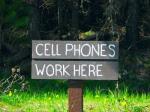 Police and Fire radio networks.
Police and Fire radio networks.
They have to work.
All the time
During power outages, hurricanes, earthquakes.
When every other wireless network is dead.
So they have to be built, maintained and operated by government, right?
Or else they cannot be trusted, right?
That’s the way cities, counties, regions, states and local governments have ALWAYS built our radio networks for police, firefighters, emergency medical response, utilities, transportation, public works.
And with good reason.
Historically (by that, I mean “before cell phones”), most radio networks were really unreliable. They were used to dispatch taxicabs and for citizens’ band radio (“CB”) by amateurs. But no government would trust such a radio network to dispatch cops or firefighters. Such networks had dead spots, lots of static, and dropped off the air entirely when the electricity failed.
With the rise of commercial cell phone and, later, smart phone networks, such networks became … well … “really unreliable“. Even today many people are angered and upset by dropped calls, “all circuits busy” and slow-loading (or “never loading”) pages. And during any large event – a packed stadium for a baseball game, or a major traffic jam, a windstorm or an earthquake, you might as well use your phone as a camera, because you probably won’t get through to make a call.
When you’re being robbed at gunpoint or having a heart attack, do you really want the first responders coming to help YOU to depend on such networks? That’s why, as I’ve blogged before, “cops don’t use cell phones“.
But building government-owned radio networks is REALLY expensive. A public safety voice network requires just a handful of sites – say 8 radio sites for Seattle or maybe 30 for all of King County here in Washington State. However, to rebuild those networks today, and to build the new high-speed data networks for responders’ smart phones, tablets and computers will take dozens – perhaps hundreds of sites to cover the same geography. And THAT takes hundreds of millions of dollars.
Hello – we’re still in the midst of the Great Recession, right? Government budgets are pinched left and right – sales tax, income tax, property tax revenues are all falling. While the private sector is still hiring, many governments are laying off employees. There are few dollars available for hundred million dollar networks.
Is there a middle way? Is there some way governments could take advantage of the hundreds of existing cell phone sites developed for commercial networks? Perhaps a way the commercial networks could take advantage of fiber optic networks and buildings or radio sites owned by government? And some way we could make the cell phone networks more secure, more resistant to terrorism and natural disasters, and therefore more reliable for public safety use?
Here in Seattle, we think so.
We think we might be able to start with all the assets which taxpayers have already bought and paid for – the fiber and microwave networks, radio sites, backup generators, skilled technology employees, and our existing investments in radios and computers. Then we would add equipment and cell sites and other assets, along with expertise and innovative ideas from private sector companies – telecommunications carriers, equipment manufacturers and apps developers. Mashing these together, we might get a private-public partnership which gives consumers and businesses more reliable, faster mobile networks, while giving responders new, state-of-the-art networks at a fraction of the cost of building them from scratch, like we’ve always done before.
That’s the idea behind a request for information (RFI) issued by the City of Seattle several weeks ago seeking ideas about private-public partnerships for next generation networks. We need some great pioneering “outside the box” ideas in response to the RFI.
And then, perhaps, we can build a modern, smart, network in the Central Puget Sound which saves everyone money, and works reliably during disasters small (“heart attack”) and large (“earthquake”).
P. S. All these ideas are not mine. In fact, to some extent I’ve been hauled kicking and screaming (or maybe shuffling and whimpering) to look for a middle way. Let’s give credit to Deputy King County Executive Fred Jarrett, United States Chief Technology Officer Aneesh Chopra, elected officials like State Representative Reuven Carlyle and Mr. Stan Wu of the City of Seattle for “coloring outside the lines without falling off the page”.



Seattle police use mobile phones all the time. They may not be reliable, but unlike police radio, they’re off-the-record. If you and I are cops and we don’t want some pesky public records request to turn up a copy of our publicly-funded conversation someday, we’re going to talk on our phones, not our radios.
Great comment, Phil, and a major concern, as all radio calls now are recorded for later playback and analysis. We definitely don’t want cell phones used to bypass public scrutiny.
There have been a few political demonstrations in our city over the past couple months, and I’ve made it a point to be there with a video camera to document the police response every time I’m able to do so. I frequently see officers on mobile phones during these actions. These aren’t people taking a break to call their spouses to let them know they’ll be late.
Bill, what was the outcome of the Public Private Partnership RFI?
Mike: I’ll send you an email on this. Others who want to know, please email me. bill at schrier dot org.